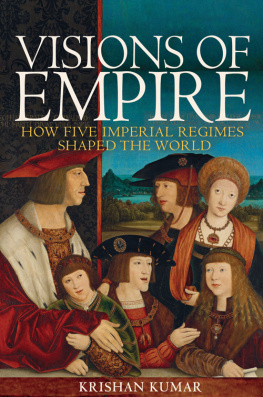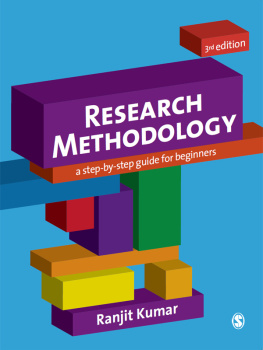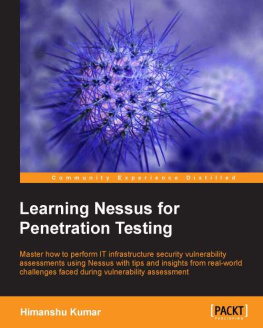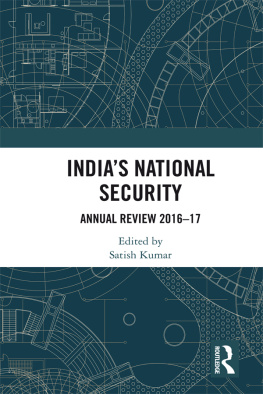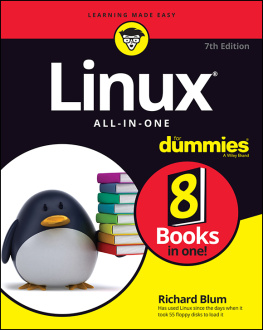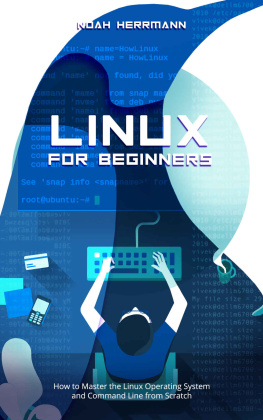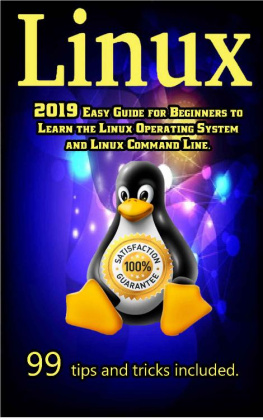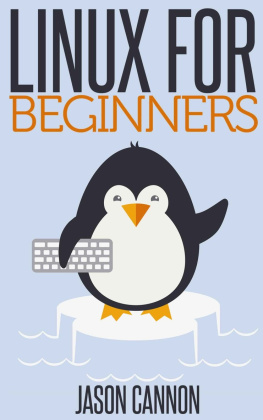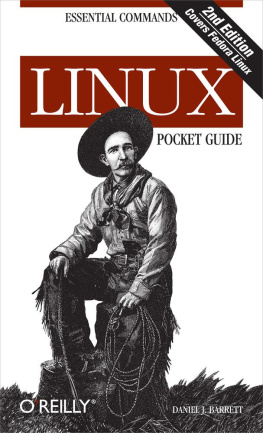Linux Guide for Beginners
The Best Guide to the Linux Operating System and Linux Commands
MADHAN KUMAR
Contents
Introduction
Chapter 1: What is Linux?
Distributions
Open Source
The Linux Shell
Root
Capitalization
Server vs. Desktop
Why Use Linux?
Chapter 2: Installing Linux Server Edition
Chapter 3: Installing Linux Desktop Version
Chapter 4: Basic Linux Tasks/Commands Sudo
Man Pages
Tasksel
Apt-get
Services
Top
Chapter 5: Basic Linux Navigation
Chapter 6: Editing Linux Files with Vim Starting Vim
Changing File Ownership
Editing and Navigating
Exiting and Saving
Chapter 7: Advanced Linux Navigation
Changing Directories and Finding Files
Listing/Displaying Files
Making, Deleting, Moving, Copying, Renaming Mounting Drives
Conclusion
Introduction
Much obliged to you for purchasing Linux for Beginners. Linux In this book, we will give you a diagram of the ideas that you need to comprehend before you really begin utilizing Linux. We will disclose to you the various components of it that you should think about before you proceed to dive into the Linux world.
Linux has numerous advantages. In any case, it additionally has various little perspectives that can leave you confounded. Not having the option to comprehend these perspectives can mess you up later on.
In this book, we will discuss what those components are. We are additionally going to discuss what Linux is, the place where it originated from, and the entirety of the key ideas that you need to comprehend before you really begin assembling your own Linux servers and keeping up your own Linux systems. Furthermore, we'll likewise show you fundamental terminal orders that will get you ready for action inside the Linux working system.
We trust you appreciate this book!
Chapter 1
What is Linux?
The main thing that we have to discuss in this book is the roots of Linux. More or less, Linux is a working system. For those of you who don't have the foggiest idea what a working system is, and for every one of you who figure you do however may have overlooked what a working system is, it is really the product layer that is between your equipment and the product that permits you to complete something gainful on a PC.
The working system is the thing that permits the product to converse with the equipment. The one lets you store data on hard drives, convey print occupations to printers, and so forth On the off chance that you are in a typical Windows climatea Microsoft Windows Operating systemyou have your equipment at the base, you have the Windows working system also, and afterward, you have Microsoft Office, for instance, that sits on top of the working system.
Linux is a working system that goes about as a middle personfor example, an extensionbetween the actual gadget and the instructional code of a program. The primary concern that you simply need to acknowledge is that in the Linux world, the product that you will be running is of a unique sort, contrasted with the ones that you would run in the Windows working system. Work area applications like Microsoft Office and Adobe Photoshop are not generally run on a Linux climate. Linux typically runs serversApache web servers, information base servers, web virtualization servers, and so forth
Nonetheless, there are different Linux conveyances out there that are explicitly made for individual PCs. These Linux circulations are, as it were, like Windows and Mac OS, as it were that they run similar sorts of projects like Word Processing projects, photograph and video altering programs, web perusing applications, program improvement applications, games, and so forth These Linux dispersions are more focused to home clients who simply need a free working system elective.
Linux didn't start as a working system, notwithstanding. Linux was a piece made by Linus Torvalds while he was an understudy at the University of Helsinki. The Kernel is basic, yet without anyone else, it is futile. It can just capacity with regards to a total working system. The Linux Kernel was utilized in blend with the GNU working system. Envision GNU is a major complex riddle with a major piece in the center missingthe large part being the Linux Kernel. The total riddle likens to a practical working system.
It is critical to comprehend what a Kernel is as this is the characterizing part of Linux. A Kernel is the focal piece of a working system that is liable for interfacing all your applications down to the actual equipment.
There are two significant kinds of Kernels contending in the present marketWindows and UNIX-like Kernels. The Linux Kernel falls under the last as does BSD, Mac OS, also, Solaris. The expression "Unix-like" alludes to the way that they work like, or depend on the first Bell Labs UNIX working system.
Pieces will in general fall under three classifications:
Micro Kernel A MicroKernel just oversees what it needs to: CPU, Memory, and IPC or between measure interchanges. On the off chance that it's anything but an IPC, Memory, or CPU, it is consequently viewed as an extra and can be dealt with in client mode.
Monolithic Monolithic Kernels like Linux are something contrary to Micro Kernels. They include not just the CPU, Memory, and between measure correspondences, yet different things, for example, gadget drivers, record system the board, and system server call.
Hybrid The Windows Kernel falls under Hybrid since it can single out what to run in both client and director mode.
Thus, somewhere in the range of 1991 and 1994, Linus Torvalds made the Linux working system by consolidating the GNU OS with the Linux Kernel. Essentially, Linus Torvalds needed a working system that isn't just free, yet additionally something that he can tweak to fit his programming needs. Linux was his innovative minimal pet undertaking that he did as an afterthought. The huge thing with Linux is, because it has a "UX" postfix and because the majority of the orders that you use look a great deal like UNIX orders, individuals believe that Linux is a sort of UNIX working system. This is absolutely not the situation. UNIX is its own kind of working system. Linux is its own sort of working system.
Linus Torvalds made the whole Linux working system from the beginning. He made Linux because he needed to make an open-source working system for individuals to utilize. Once upon a time, UNIX was not open source. If you needed to utilize UNIX, you needed to pay someone to utilize UNIX. Microsoft Windows, obviously, is Microsoft Windows. You generally need to pay to utilize Microsoft Windows.
So Linus Torvalds, being the PC engineer that he is, needed a working system that was totally free. He and his companions at the Massachusetts Institute of Technology, or M.I.T., needed a working system that they don't need to pay for to utilize and will likewise assist them with making the PC programs that they needed to make more proficiently and simply. As such, they needed a working system that they can alter to meet their requirements just as totally allowed to utilize.
The large thing to recall with Linux is that, even though it is a working system, it appears to be absolutely unique from Microsoft Windows or Mac OS.
Distributions
After Linus Torvalds made Linux, thinking back to the 1990s, he needed to quit working for a tad. Along these lines, what he did was he made the source code for his new working system totally accessible to the general population. This permitted everyone on the planet, particularly PC nerds, researchers, and so forth, to begin playing with and changing the Linux working system as they saw fit.



